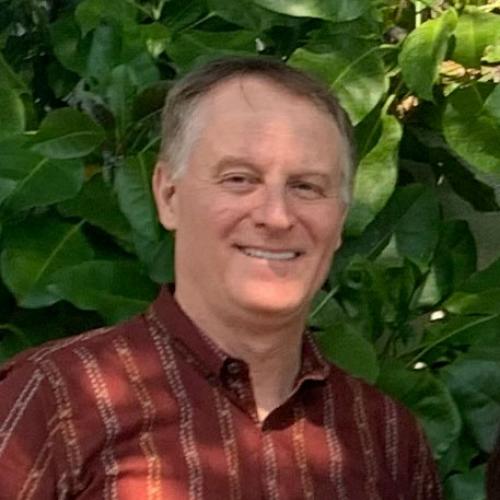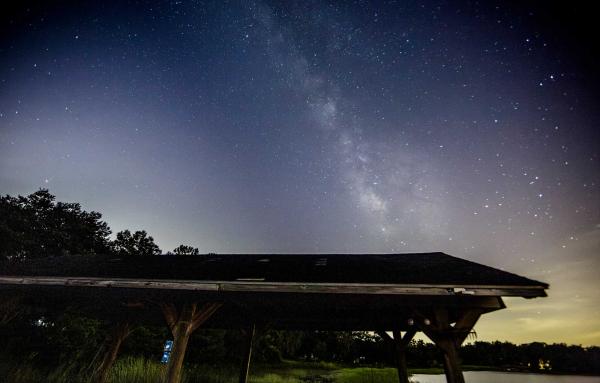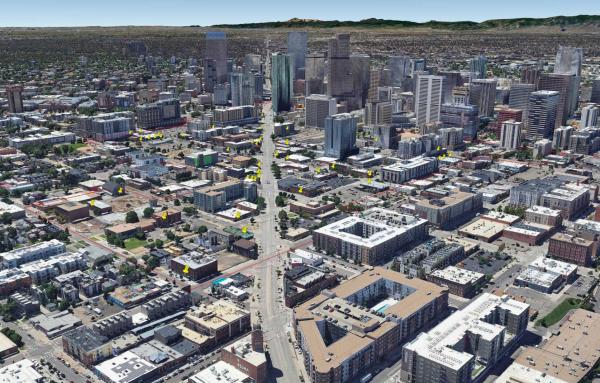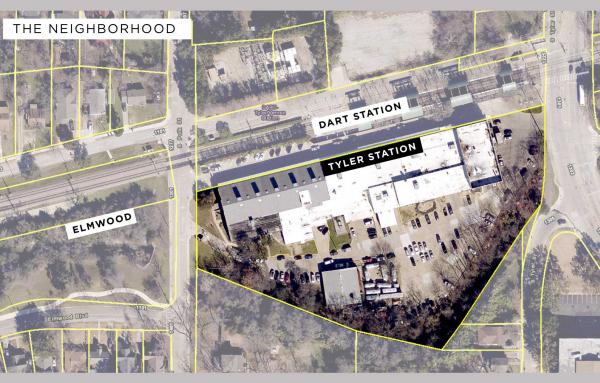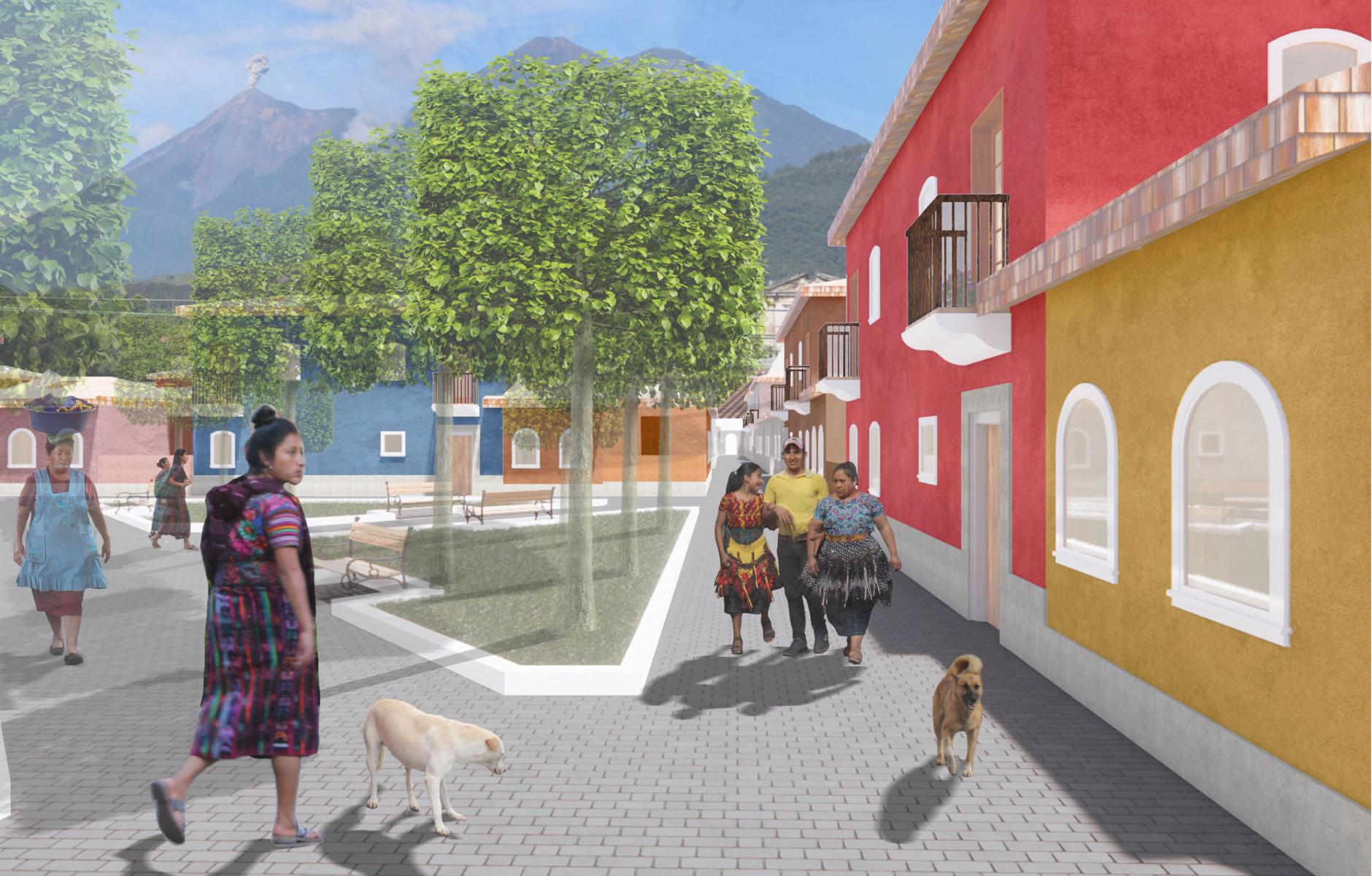
Sustainable new timber-frame fabric in Guatemala
Construyendo Guatemala proposes low-rise, high-density mixed housing, a community center, open spaces, and a school for a 10-acre infill site in Antigua. Designer Deisy Velasquez analyzed the urban fabric in Antigua, founded nearly 500 years ago in 1543. The city’s layout in a 5-by-5 block grid, oriented north-south with a central plaza, was dictated by the Laws of the Indies.
“Each block was subdivided into four plots of land for homeowners,” Velasquez explains about the city fabric. “The blocks were formed with a 30-foot-wide perimeter wall. The subdivision of land and the perimeter walls formed interior courtyards for the houses. Some of the blocks were cut out to create urban spaces in the fabric. The housing is formed around courtyards that provide light and air into the home. Due to the frequent earthquakes, homes range from one to three stories, with thick walls of brick, stone, and plaster.”
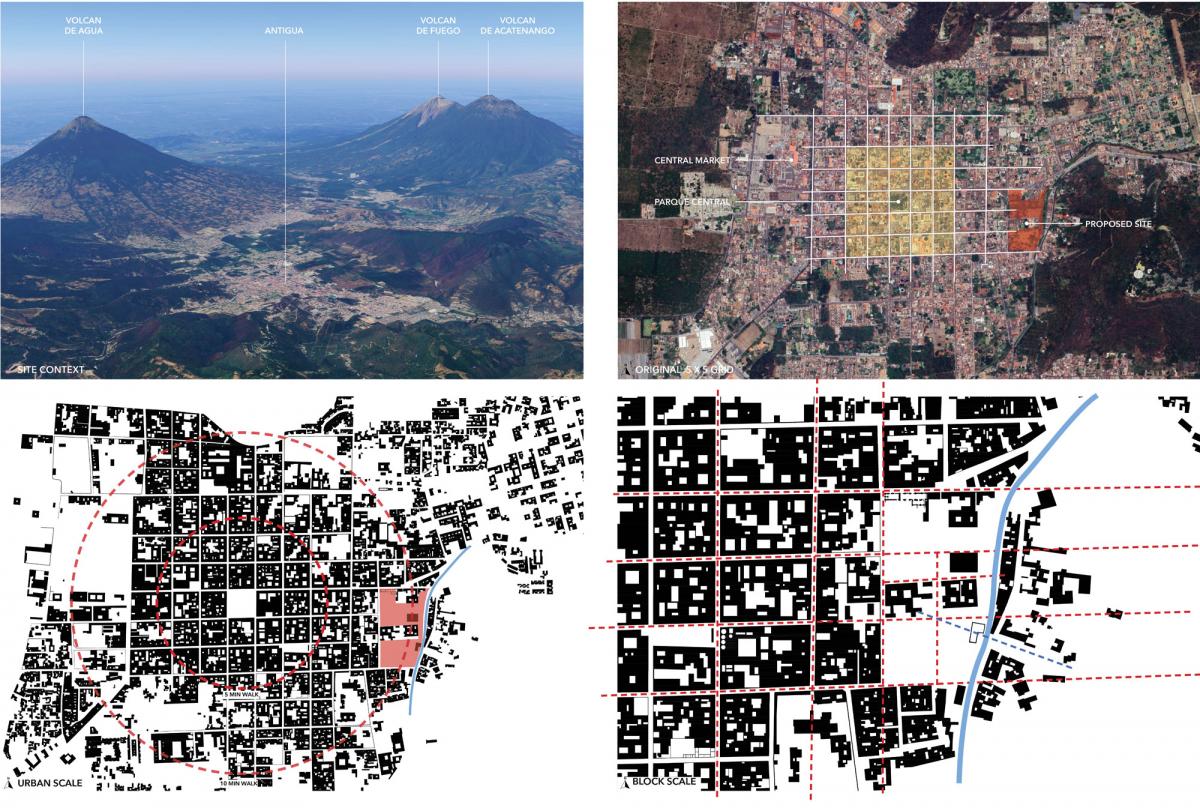
Houses in Construyendo Guatemala respond to the historic fabric with multiple pockets of green spaces within a neighborhood block. The public spaces are designed with local vegetation and trees for comfort from the heat. The compact block is within walking distance of the central park, churches, central market, scenic spots, jobs, retail shops, schools, and transportation, Velasquez explains. The street network caters to pedestrian safety and is also accessible to bicycles and cars.
This project explores use of timber technology in the earthquake-prone region. That strategy enables the use of regionally sourced timber, promoting sustainable development. Numerous sawmills operate throughout Guatemala to process cross-laminated timber (CLT), grown in the Peten region. “CLT is an earthquake-resistant building method that can address housing issues and shortages providing durability, longevity, and healthy homes for families lasting many generations,” she explains. “CLT would replace concrete blocks reducing carbon footprint and greenhouse gas emissions.”
The units are designed using a 10-foot-by-10-foot modular system that can be prefabricated and assembled on site. Exterior masonry walls would protect the timber frames. The city is set among active volcanoes, which accounts for the high geologic activity, and also the natural beauty that attracts visitors.
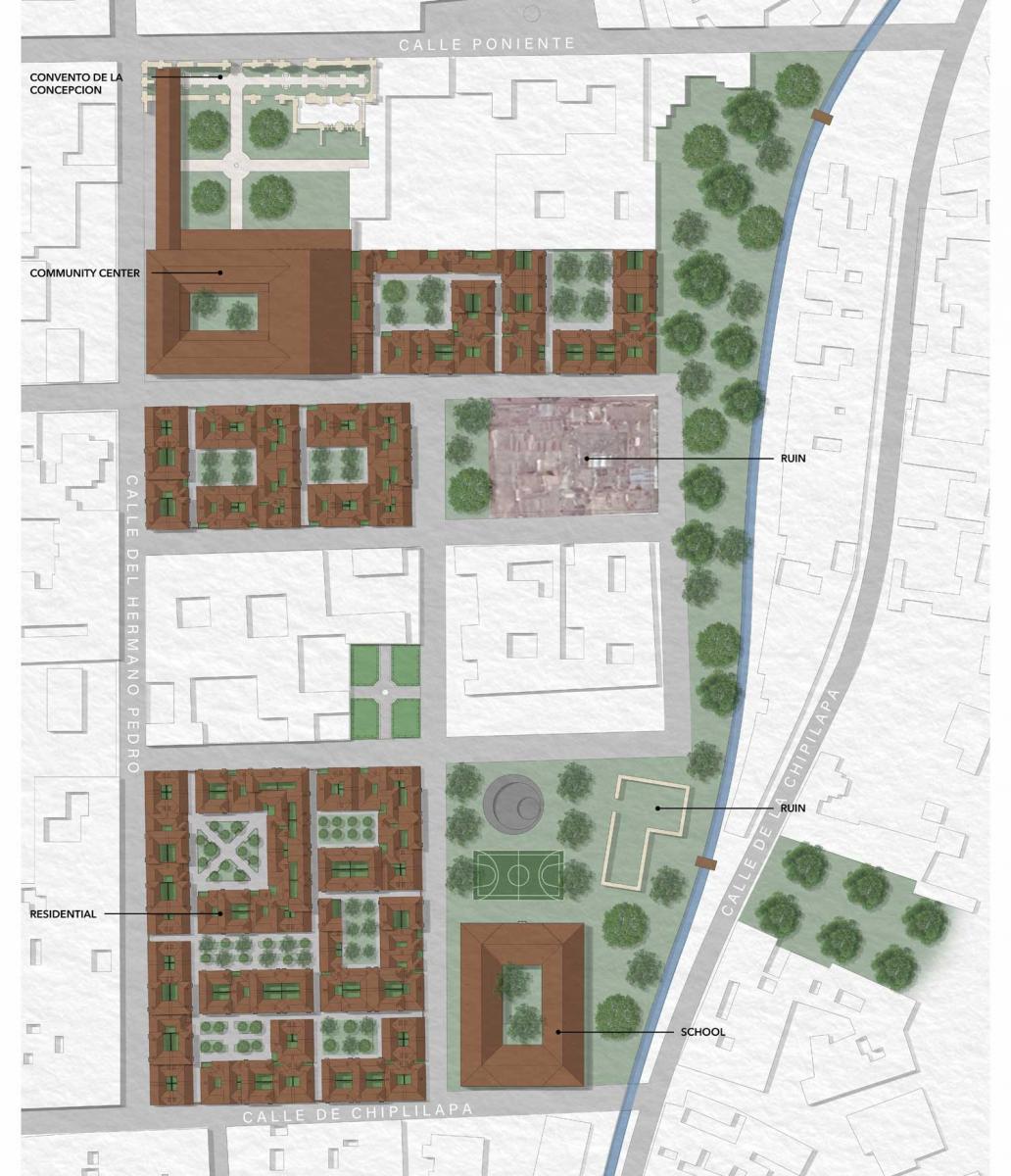
Antigua has become a major tourist destination largely populated with hotels, restaurants, and retail shops pushing out the people of Antigua. The city needs affordable housing, and the design includes three unit types for different households and income. “We can not purchase a house in Antigua because it is very expensive. If you want to purchase a house you have to have a lot of money because prices are raised due to tourism,” according to a local woman.
The new community center would include a basketball gymnasium that would double as a shelter during natural disasters. The city also includes two ruins that are incorporated into the public spaces.
“Throughout the process of this project, I learned the importance of understanding the history and assets of a place,” Velasquez notes. “How the city fabric was established, and how its strategies can create neighborhoods and urban spaces for people. I created a figure-ground from scratch that allowed me to fully understand the urban fabric, the grid and blocks, and how courtyards were shaped. It taught me the difference between public, semi-public, and private spaces for people throughout the city. The placement of landmarks adjacent to urban/green spaces creates spaces where people can pause, and enjoy their surroundings while children run around chasing pigeons.”
The 2025 Charter Awards will be presented at CNU33 in Providence, Rhode Island, on June 12.
Construyendo Guatemala: Tradition and Technology, Antigua, Guatemala:
- Deisy Velasquez, University of Maryland School of Architecture, Planning & Preservation, Principal designer
- Matthew Bell, Professor and Thesis Advisor
2025 CNU Charter Awards Jury
- Rico Quirindongo (chair), Director, City of Seattle Office of Planning and Community Development
- Majora Carter, CEO of Majora Carter Group in the Bronx, New York City
- Jake Day, Maryland Secretary of Housing and Community Development
- Anne Fairfax, Principal, Fairfax & Sammons in New York, NY, and Palm Beach, FL
- Eric Kronberg, Principal, Kronberg Urbanists + Architects in Atlanta, GA
- Steven Lewis, Principal, ZGF Architects in Greater Los Angeles, CA
- Donna Moodie, Chief Impact Officer, Urban League of Metropolitan Seattle
- Joe Nickol, Principal, Yard & Company in Cincinnati, OH




